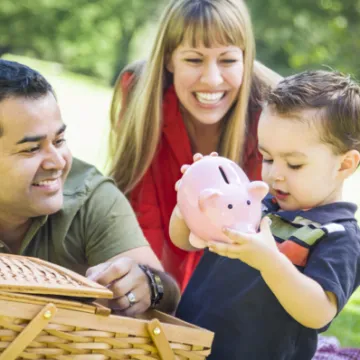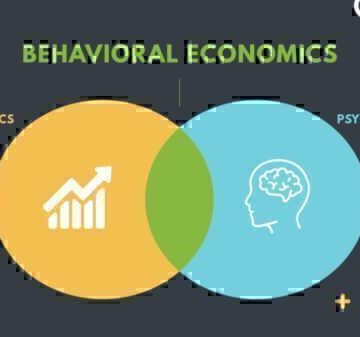Opening a savings account is one of the simplest and most effective ways to teach kids smart money habits, helping them learn the value of saving over time.
When choosing an account, look for high-yield interest rates, low fees, and online banking features.
If you’re looking for guidance on building strong financial habits for your whole family, GreenPath offers free financial counselingfree financial counseling to help you plan for a brighter future.
Why a Kids’ Savings Account is a Smart Move
While there’s no shortage of books, apps, and games that teach kids about moneyteach kids about money, one of the simplest and most effective ways to help them learn is by opening a savings account.
There’s no minimum age to start, and even small, regular deposits can add up over time. Whether you want to help your child build smart money habits or give them a financial head start, a savings account can be a valuable tool.
And here’s the cool part—kids today are already thinking about their financial future. An Acorns survey found that 41% of Generation Alpha (kids ages 6-14) are saving for big goals like college, a house, or even retirement. Yep, retirement! They’re picking up money lessons from parents, school, and even social media. Opening a savings account now gives your child a hands-on way to manage money, set goals, and feel proud of their progress—no matter how small their deposits might be.
The Benefits of a Savings Account for Kids
1. Encourages a Savings Mindset
Does your child love spending their allowance the moment they get it? Whether it’s a new Lego set or video game console, the temptation to splurge is real. A savings account introduces the concept of delayed gratification—teaching kids that saving money over time allows them to reach bigger goals.
For example, if a child deposits just $10 per week, they’ll save $520 in a year—and that’s before interest kicks in. Seeing their balance grow fosters a sense of accomplishment and helps them understand that good things come to those who wait.
Pro Tip: Encourage your child to divide their money into three categories:
- Spend (for small treats)
- Save (for bigger goals)
- Give (for charity or gifts)
This simple strategy helps them develop a balanced approach to money management.
2. Builds Financial Knowledge
Many adults wish they had learned more about moneylearned more about money as kids. A savings account gives children hands-on experience managing their finances and introduces key financial concepts, including:
- Making deposits and withdrawals: They’ll learn how to put money in and take money out responsibly.
- Tracking account balances: Keeping an eye on their savings helps them understand cash flow.
- Understanding interest and compound growth: Watching their money grow with interest teaches them about the power of saving early.
As they get older, transitioning from a savings account to a checking account can help them practice budgeting, debit card use and responsible spending.
3. Boosts Confidence with Money
Handling their own savings builds confidence. When kids have control over their money, they gain a sense of independence and responsibility. Watching their balance grow gives them a sense of pride, reinforcing good financial habits.
Many banks even offer kid-friendly online dashboards where children can log in and check their savings progress. This real-time visibility keeps them engaged and motivated to save more.
Pro Tip: Encourage your child to set a goal and track their progress. Seeing the numbers add up can be a rewarding experience.
4. Helps Them Plan for the Future
A kids’ savings account is more than just a place to stash money—it’s a tool for goal setting. Whether they’re saving for a big purchase, a school trip, or even their first car, having a dedicated account helps them stay focused and committed.
This is also a great opportunity to introduce long-term savings goals like college savings or investing. While they may not need to think about retirement yet, teaching them early about setting aside money for the future is a valuable lesson.
Pro Tip: Consider a high-yield savings account for better long-term growth. The higher the interest rate, the more their savings will multiply over time. For example, if your child deposits $1,000 into a high-yield savings account earning 4% interest annually, their savings will grow to $1,217 in five years—without adding another penny!
Types of Savings Accounts for Kids
Not all savings accounts are the same! Depending on your child’s age and financial goals, here are a few options to consider:
- Traditional Savings Accounts: Low minimum balances and a fixed interest rate make these great starter accounts.
- High-Yield Savings Accounts: Offer higher interest rates, helping savings grow faster, though they may require a higher minimum balance.
- Custodial Accounts: Managed by a parent or guardian until the child reaches a certain age—ideal for long-term goals like college savings.
- Joint Accounts: Both you and your child have access, allowing you to monitor their activity and guide them as they learn.
What to Look for in a Kids’ Savings Account
When choosing the right account, keep these features in mind:
- Competitive Interest Rate: Higher interest means faster growth.
- Low or No Fees: Avoid accounts with unnecessary fees that eat into savings.
- No High Minimum Balance: Some accounts require a minimum deposit—look for one that fits your budget.
- Online & Mobile Access: Digital banking tools make managing money easier for both you and your child.
- Financial Education Resources: Some banks and credit unions offer budgeting tools and savings challenges to help kids learn.
- Joint Account Option: If you want to guide your child’s savings, a joint account gives you oversight while allowing them some independence.
How to Open a Savings Account for Your Child
Ready to open an account? Here’s what you’ll need:
- Your ID (passport, driver’s license, or other official identification)
- Your child’s birthdate and Social Security number
- A minimum deposit (some banks require $25–$100 to start—check in advance!)
Many banks allow you to apply online or in person at a local branch. Before finalizing your choice, compare different accounts to find the best interest rates, lowest fees, and most user-friendly tools for kids.
You Might Also Be Interested In…
Mentoring Your Kids for Financial Success Mentoring Your Kids for Financial Success
What You Will Learn
- Real life examples of money mentorship in action
- Financial life lessons to share with children
- Tips to set your child up for a financially healthy future
GreenPath Financial Service
GreenPath, A Financial Resource
If you’re interested in building healthy financial habits, paying down debt, or saving for what matters most, take a look at these free financial tools.










